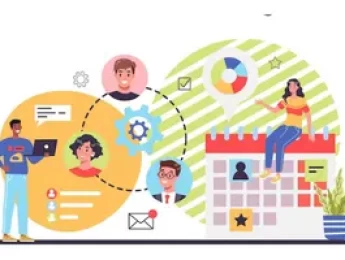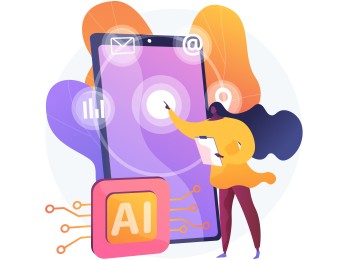Teachers and other important personnel must understand how to efficiently manage their students in a classroom setting to guarantee their safety and an engaging learning environment. Poor classroom management often leads students to fall behind their peers and fail to meet expectations.
Classroom management encompasses everything that transpires within the classroom, from the topics being taught to the communication method and the learning activities provided to the students. Regardless of age, students will struggle to engage with the topics and focus on their learning if the teachers or teaching assistants do not provide adequate care.
Communication is a vital aspect of any classroom, and a teacher must be able to communicate with the students in different ways, using varying language and tone of voice to encourage a particular outcome. They must also understand how to meet students on their level and create a positive relationship built upon trust and appropriate attention.
Furthermore, a classroom leader must also be competent in SEN education and how to meet best the needs of disabled students or those who need extra support with their learning. Those with SEN will often require additional 1-to-1 care, specialised equipment, and other accommodations to ensure they can progress alongside their non-SEN peers.
Upon completion of this course, participants will be able to:
- Understand the importance of effective classroom management within an educational facility.
- Recognise the consequences of poor classroom management on the organisation’s performance and for the student’s education.
- Value building positive relationships based upon trust and fairness.
- Evaluate the use of language and communication and how it can improve student engagement.
- Explore various methods and techniques to promote full engagement with the taught subjects.
- Consider each individual student’s needs and abilities and arrange for additional help to those who require it.
This course is designed for anyone in education who is responsible for managing a classroom. It would be most beneficial for:
- Heads of Departments
- SEN Teaching Assistants
- Subject/Course Leaders
- Headteachers
- Deputy Headteachers
- SEN Managers
- Teachers
This course uses a variety of adult learning styles to aid full understanding and comprehension. Participants will review case studies of real-world classrooms from varying educational facilities to highlight different methods used to increase student engagement, meriting performance, and areas where students face unnecessary difficulty.
They will participate in various learning methods to guarantee a full understanding of the taught content and any related skills. This combination of methods includes seminars, video materials, open discussions, and group activities. The group activities, in particular, allow the participants to demonstrate their new skills and engage in constructive feedback from their peers.
Day 5 of each course is reserved for a Q&A session, which may occur off-site. For 10-day courses, this also applies to day 10
Section 1: Introduction to Classroom Management
- Define what classroom management is and what its purpose is within an educational facility.
- Recognising the consequences of poor classroom management on the student’s performance.
- What external and internal factors influence the effectiveness of classroom management?
- Meeting expectations and providing a rewarding learning experience.
- Understanding each individual student and their strengths and weaknesses.
Section 2: Effective Communication
- Evaluating the ideal methods to engage with the students through communication.
- Utilising language and tone to demand respect.
- Communicating with students as equals and offering respect.
- Ensure that all lessons are presented in a fully digestible way based on the students' age and capabilities.
- Understanding the value placed upon verbal praise and encouragement.
- Controlling the environment using a firm voice and language.
Section 3: Engaging with Students
- Acknowledging the difficulty and boredom-inducing topics and exploring various ways to make the topics more engaging.
- Adjust lesson plans based on various factors, reducing or increasing workload depending on the student's receptiveness.
- Navigating complicated subjects with patience and calmness.
- Exploring various learning methods to increase student engagement and learning retention.
Section 4: Monitoring Learning
- The importance of monitoring learning throughout the subject lifetime.
- Implementing assessments, tests, and other written tasks to gain an understanding of the student’s knowledge.
- Using gathered information to adjust future lesson plans to compensate for gaps in knowledge.
- The advantages and disadvantages of different methods of measuring performance.
Section 5: Providing SEN Education
- Explaining what SEN education is.
- Evaluating the ideal ways to accommodate SEN education within the classroom.
- Creating a disability-aware classroom to guarantee acceptance from all non-SEN students.
- Accommodating for additional learning needs and supplying necessary learning equipment.
- Adjusting lesson plans for SEN students who may struggle with the taught content.
Upon successful completion of this training course, delegates will be awarded a Holistique Training Certificate of Completion. For those who attend and complete the online training course, a Holistique Training e-Certificate will be provided.
Holistique Training Certificates are accredited by the British Assessment Council (BAC) and The CPD Certification Service (CPD), and are certified under ISO 9001, ISO 21001, and ISO 29993 standards.
CPD credits for this course are granted by our Certificates and will be reflected on the Holistique Training Certificate of Completion. In accordance with the standards of The CPD Certification Service, one CPD credit is awarded per hour of course attendance. A maximum of 50 CPD credits can be claimed for any single course we currently offer.
- Course Code IND08-103
- Course Format Classroom, Online,
- Duration 5 days













